Sun Tzu said, “Great results can be achieved with small forces provided those leading them are skilled at war.” It becomes easy for a “small and skilled to fight big and leaderless crowd.”
Left Wing Extremism (LWE) is expanding at a rapid pace and so is the lethality in their actions. It is organising itself into a structured guerrilla force that would need forces that are having better capabilities and ethos comparable with the paramilitary forces even armed forces. Central Armed Police Forces (CAPF) and state police forces are finding it difficult to cope up with the sustained operations to cause meaningful erosion in the capabilities of LWE organisations. CAPF and police leadership is expected to lead men during high intensity operations without being trained to do so. History is replete with the examples that wars are won and lost not by fighters but by the leaders. As a leader, one may have to throw the men to execute operations that are often considered extremely dangerous. But before a leader chooses to do so, he must ensure men are trained and led by leaders of due competence. Virtues in a leader come when they “sweat together to bleed together” and “train together to fight together.” Even low intensity conflicts cannot be won by remote control leadership; they are won by leaders by being right up there with the men to rally around their spirits when the chips are down.
Unacceptable loss of policemen’s lives during engagement is something that needs critical review. Those who hide failures in small and big engagements will become the cause of humiliation to the nation and will repeatedly put the lives of the men under their command at greater peril. Unskilled leaders either should be removed or should themselves step aside because armed engagement is not an event management, it is a serious business. Loss of lives does take place during operations but loss of weapons and morale is difficult to reverse unless the Central Reserve Police Force (CRPF) hits back with vigour to bleed the Maoists. It is an ethos globally followed by all security forces that weapons are symbol of honour and loss of weapons is loss of honour, either you kill those who endeavour to snatch it or get killed, but don’t come back on your feet without it being the motto.
What Needs to be Corrected?
A guerrilla force becomes bold and aggressive when they taste success. The loss of men and weapons of security forces gives impetus to swell the numbers of Maoists and a sense of victory. Bruce Hoffman argued that the “cult of the insurgent and their success in waging war against the security forces will prove the most critical factor in inspiring, motivating and animating the lethality of their savagery” and if the success is repeatedly allowed to them due to own failures, defeating them will become equally difficult. Such reversals make guerrillas invincible in the eyes of the local populace because the population swings towards the victors and shun the vanquished. Guerrillas and insurgents prosper in an environment where civil, cultural and political rights are compromised by neglect and insensitiveness of the government. There is a need to introspect what is not right with the strategy to fight with the Maoists.
Conceptual Faultiness
• A force without a campaign strategy and concept of operations is heading nowhere. A proactive strategy should be backed by concept of operations, tactics, and orientation of force to be able to put theories into practice. Until and unless this aspect is resolved, the anti-Naxal operations will not lead to the desired end state. No one can do it except the leadership of the CRPF itself.
• Orthodox tactics of using mass against agile and swift force is a bad idea to pursue. If the mind-set is that numbers would win the battle of skills than there is a serious flaw in the basic idea of anti-Naxal operations.
• Too much reliance on Standared Operating Procedures (SOP) leads to predicted and regimented routine and make forces less innovative. SOPs are broad guidelines and often become redundant after a period of time. Thus the response of the security personnel should be flexible. Naxals succeed because their response is often flexible and unpredictable and both these aspect brings in the factor of surprise and deception. It is important to understand that flexibility comes when there is intimate command relationship.
• “Ring of Steel Tactics” (use of force and converting every population centre, small and large into concentration camps) is a flawed strategy and has never succeeded in fighting insurgency and will not succeed in future too. Afghanistan experiment of the Soviet Union and the United States has failed and so will it fail in the subcontinent if it is applied without a strategy of multi-polarity (employment of security forces and civic actions simultaneously). The CRPF should be careful and not use force against those who are sandwiched between the two opposing sides.
• Failure of the campaign at two levels needs careful review, civil and counter-Naxal. Both are complementary to each other and cannot be separated. Failure of either of these campaigns will bring the efforts of other to naught. Kashmir is an example where military strategy succeeded and the situation was brought to the manageable level between 2006 to 2010 and the opportunity was squandered away by political mismanagement.
• Where is the non-military response to a socio-political problem? The government needs to carry out social audit and it is not a surprise that corruption in disturbed areas is much higher than the areas where there is comparative peace. Conflict only benefits corrupt and contractors and one can’t see any exception to this cliché in Red Corridor.
• Every political establishment is looking for “peace during our time and ephemeral victory by force”. Left Wing Extremism started as a weapon of protest to the neglect and intrusion in cultural lives by way of exploitation of voiceless people. The end to this expression of anger will have to be found by a medium of empathy and respect to their sentiments and inclusive development and not by force.
• Conceptual and intellectual understanding of conflict is missing. Mr. Sudhir Pratap Singh former Additional Director General (Training) had initiated the process of interaction and introspection through intellectual discourse. The Centre for Land Warfare Studies (CLAWS) had organised one of the first security conclaves where tactical commanders could interact directly with the experts and professionals and also put across their viewpoints what they considered is not a right strategy. However, that initiative remained as an one-off event and has since been discontinued with. Officers from almost every force had requested if such interactions can be conducted for their force? But probably due to lack of strategic/conceptual vision the initiatives did not take off.
Tactical and Command & Control Issues
• First comes to mind is what are the intelligence agencies doing? A simple tactical assessment suggests that to concentrate a force of 300 men for an ambush would need the mobilisation of Maoists from more than 50 to 100 km. They would require logistics to sustain for a period of at least 24 to 36 hours if not more. Even if this strength is to be sustained it would need food grains and purchases from the market and carting it to the designated areas. It is a mystery that how come intelligence agencies failed to notice logistics, the concentration that would have taken place at least over a period of time, reconnaissance of the area and finally execution of the attack on 24 April 2017. Tough questions need to be asked from intelligence agencies. It is easy to blame the CRPF but the root of the problem also lies elsewhere.
• A full company is moving every day but no one noticed that the men are following a routine that is catastrophic. In addition, this force is led by Inspectors and Sub Inspectors. All counter-insurgency operations globally, including by the Army and the Assam Rifles in India are always led by officers when strength is a platoon or more. The job of officers is not only to conduct operations, but also to see that the drills and procedures are being followed, ensure men remain alert and do not follow a routine that can lead to reversals. It does not end here, even everyday debriefings highlight where the mistakes were committed and what corrective actions are required. But when the officers prefer to stay back and leave men to do what they find most convenient, such disasters will take place. It is not only applicable to the CAPF but also to the armed forces engaged in Counter Insurgency and /Counter Terrorist (CI/CT) operations. When the involvement of officers is there on the ground, men will commit lesser mistakes.
• Responsibility and accountability is more important. The failure of command is not only at the tactical level but even at the national level. If a man who is not trained to fight a war is made a commander of the premier counter-insurgency force, it is a recipe for disaster. Acumen in marshalling troops comes when you understand nuances of leading men from section upwards. It is not a mistake of the police officers who are parachuted from top but of the political establishment that has created such a flawed system. The nation will have to pay the price repeatedly till such time that flaw is set right.
• Command and control on the ground is a major cause of concern and that has remained unaddressed. During the security conclave in 2016 one of the officers from CAPF raised a question that how they can fight an irregular war if the decision to distribute men arbitrarily is done by a Deputy Collector or a Superintendent of Police of a district who has little idea as to how a tactical unit operates. Who sees that cohesion of the force is not diluted. Is the counter-Naxal grid decided by the administration or by the force? Is there a regular intelligence assessment, review of deployment, impact assessment of operations conducted in the period of three months and review of strategy and tactics? These issues do not surface but it is a reality that tactical commanders are expected to deliver results on the ground under circumstances created by such policies. These aspects are operational imperatives and can’t be brushed under the carpet.
• Almost all encounters have highlighted one aspect prominently that the CRPF needs to develop an ethos of a counter-insurgency force. Such ethos come when leaders lead by personal examples. If the leaders do not expose themselves to the danger how can they expect men to expose themselves to conflict situations? No force can become a good fighting machine if the ethos and elitism is absent and hunger for engagement with insurgents is conspicuous by its absence.
What Should Be Done?
The strategy to deal with guerrilla is based on alertness, mobility, and swift attack. Tactics based on surprise and deception to deliver a lightning blow through lightning decision is must to defeat insurgents1. No force can achieve results by adopting predicted operations and by following conventions. A counter-guerrilla force should defy conventions and adopt the unconventional approach. The fort mentality and perception of camps being safe is a dangerous mind-set. Meet Guerrillas where they don’t expect you. Psychologically leaders and men must continue to think, where he is, what he is doing, where I should be and what should I do to keep him on the run. More than the kills it is important to create fear psychosis and uncertainty in the minds of the guerrilla so that he commits mistakes to fall into the trap. What is urgently required to be done is to restore the belief and combat edge of CRPF men engaged in counter Naxal operations, and that can be done by leaders who are prepared to expose themselves to danger. Men rally around the leaders who can challenge their guts and command respect for being invincible. Men do not become fearless or invincible by possessing sophisticated weapons, imbibing mock drills or by ‘drum beats’, they turn invincible under fearless leaders who are prepared to lead their men from the front. Let us be clear, it is the challenge of how you can lead your men. The difference between a crowd and organised discipline unit is ‘leadership’.
• Why are Maoists successful in their ambushes? The answer lies in their deep understanding of the terrain, knowledge of where the security forces are, what they must be doing and what Maoists should do. They use terrain effectively to maintain surprise and probably the CRPF men in some cases failed to notice the characteristics of terrain. Geography is interactive and it will tell those who can read it where the danger lies and where the opportunities exist. That is the job of a leader to explain it to the men how to read and identify the vulnerable geographic spots and what precautions need to be taken. Genghis Khan used it, Alexander exploited it and Mao employed geography as a weapon to defeat his rivals.
• Organization and unity of command. The principle of unity of command is must and cohesion of unit should be maintained at all cost. Let there by vacuum in the deployment but breaking cohesion will create vulnerabilities and that must be avoided. The concept of command, control, and cohesion can best be understood by those who are accountable to their men and not by the district administration or state political leadership. What is not possible must not be attempted.
• Forceful entry into sanctuary and support base area of Maoists is must. Avoidance of engagement is a retrograde step. The only way to redeem the confidence and morale is through success in combat. The key to success is making guerrilla insecure and drive him out of his safe sanctuaries. But that should be attempted after resolving command and leadership issue.
• Create specialisation and develop core teams to excel. If the government thinks that all units of CRPF can be trained and developed as the counter Naxal force than perhaps they have no idea how to deal with such conflicts. If you expect the CRPF to rush from election duty to law and order to counter-insurgency operations, it is simply a misapplication of the force. Before a unit is inducted for counter Naxal operations it needs orientation, pre-induction training and administrative preparation where officers and men train together under the supervision of the senior leadership of the CRPF. The units should be validated for their preparation before induction. To ensure institutional experience and regimentation, the counter-insurgency units should be separated from the rest of the force. There should be a clear distinction between counter-insurgency force and law and order units. Training of men and officers should be separate for both these forces since the mandate is different. It will build expertise and excellence.
• Use the smallest force in the quickest time at the farthest place. Counterinsurgency force should drift like water and evaporate like gas. That means mobile and able to hit the hub centres of the insurgents. T.E. Lawrence. Said, “Guerrilla warfare is more scientific than a bayonet charge.” After incident like Sukma men must be out as suspension of operations is seen as the victory by Maoists and it will lower the morale of the forces. If there is a mishap in para drop, the entire unit is made to jump again on the same day with commanding officer and brigade commander in the lead; similar is the practice in all other units. Stopping road opening operations for 10 days will make men more reluctant and apprehensive. The confidence of men can be regained by making them do what they are mandated for rather than holding them back. Care should be taken to ensure that drills are corrected and mistakes are ironed out. Order of D M Awasthi, Special Director General, Anti-Naxal Operations to suspend road opening for 10 days sends a mixed signal of wariness, caution and populism with men.
• Fight with method and diligence. Mao said, “To gain territory is no cause for joy, and to lose territory is no cause for sorrow. Those who fight without method do not understand the nature of guerrilla warfare.” Method and diligent planning is must to dominate the prevailing conditions. However, such deep understanding can come by years of experience being in the business of irregular war. The cult of guerrillas, psychology of insurgents, knowledge of geography and knowledge of the human terrain is the basic input for a diligent planning process. It is pure research and needs professionals to assess the intelligence, behaviour of local population and own reactions to a contingency. Intelligence will never be accurate and conditions will never be ideal, therefore, the professional counter-guerrilla force should create conditions for their success in meeting engagements. What will succeed is methods and ability to handle the adverse situation by quick decisions. Forces should develop the capability to control and deny space so that insurgents are kept on the run. The moment guerrilla is given time to think he will always create vulnerabilities to your regimented routine.
• Improve personal skills of men. Small engagements are decisively won by decentralised tactical manoeuvres. These manoeuvres can be mastered if personal skills of individuals and group are of high order. Main reasons for the military forces to succeed are their ability of decentralized tactical manoeuvre, use of terrain, leadership and exceptional personal skills. Ultimate deliverance of combat power in such conflict is dependent on personal and group skills. Ruse, raid, and the ambush by small, fast-moving task forces, or “flying columns,” using superior tactics and speed is key to success. But these small mobile teams must be backed by solid sure-footed strong columns that are able to link up even if it requires fighting through the stiff oppositions.
• Policies other than employment of security forces. Conflicts are rarely resolved or terminated by use of force. It requires strategies other than war and alternative measures of conflict management. The ultimate objective of the use of force is reconciliation, negation and isolating the Maoists from the population. The common man does not want conflict and bloodshed, he is anxious for peace. Therefore, initiatives by NGO, citizen committees and forum for reconciliation can create the suitable environment for engagement with the people and insurgents.
• Strategy of multi-polarity. The strategy of using force may not succeed unless combined with the simultaneous work of development of roads, communication, health, education and markets where tribal can sell their agriculture produce. In addition, the IW and perception management must continue without being too loud and too obvious.
• Leadership. H. Norman Schwarzkopf said “Leadership is a potent combination of strategy and character. But if you must be without one, be without the strategy." Because strategy can be made by a good leader and good strategy cannot fill the vacuum of a leader. Moreover to defeat the strategy of enemy, you need leaders who are quick to take a decision and seize opportunity even under desperate conditions.
Conclusion
The key to fighting successful counter-insurgency campaign will be determined by understanding the nature and cause of the insurgency. If the insurgency is due to the criminal and ill-founded uprising, in that case, use of force to defeat the insurgents and guerrillas with a strong information war and perception management campaigns are likely to yield results. But if the insurgency is founded on legitimate grievances, a corrupt and insensitive administration that refuses to recognise and resolve genuine concerns of the people, in that case, the conflict will not be ended until the government agrees to reach a solution by negotiation and not by force2
If a force feels that they are left to fend for themselves while facing a life-threatening situation, it is a sign of lack of low morale and leadership vacuum. To expect spectacular results from these men under the prevailing organisational structure will be too much. Looking at the current state of preparedness of the force to deal with such conflict needs a serious review. There is a need to be ruthless to get to the bottom of the problem to set right what ails the premier internal security force of the country. At the moment, the force does not give confidence to the citizen of the country that it will be able to deliver if the crisis escalates. Therefore, in the larger interest, there is a need to undertake over-arching reforms in the structure, leadership and the concept of operations. Rudy Giuliani said, "Change is not a destination, just as hope is not a strategy." Thus leaders should create conditions for men to achieve success and not demand success from the men without creating conducive conditions.
Notes:
[1] Robert Brown Asprey, guerrilla Warfare Strategy And Tactic, Encyclopedia Britannica.
[2] Ibid.

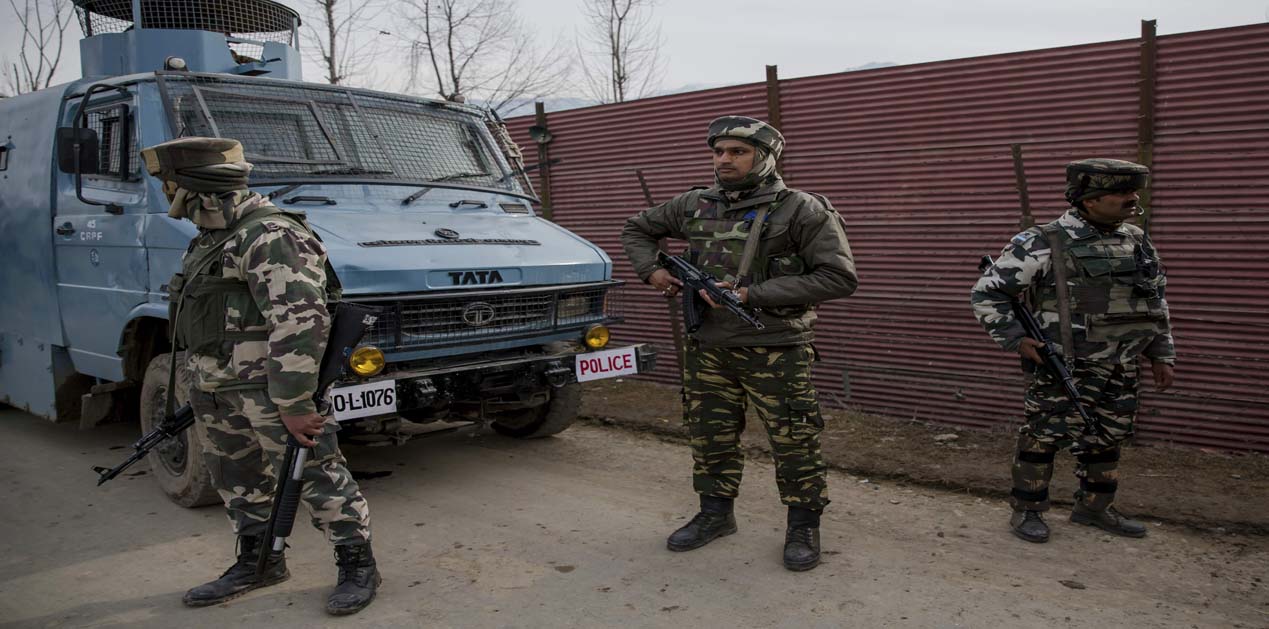

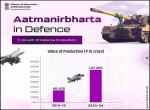

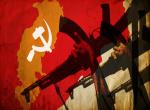
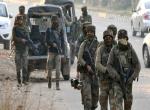
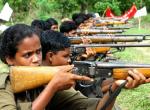
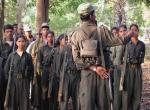
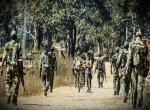

Post new comment